Manufacturer's Specifications:
LHH1001 CD Transport
Coaxial Output Level: 0.5 V peak to peak, 75 ohms.
Optical Output Level:-15 to 23 dBm.
Number of Programmable "Blocks": 20.
Favorite Track Selection Memory Capacity: Typically, 150 discs with five selections each or 70 discs with 20 selections each.
Power Requirements: 120 V a.c., 60 Hz, 0.18 ampere.
Temperature Range: 41° to 95° F (5° to 35° C).
Humidity Range: 5% to 90%. Dimensions: 17 7/8 in. W x 4 1/8 in. H x 13 3/8 in. D (45.4 cm x 10.3 cm x 34.5 cm). Weight: 30.8 lbs. (14 kg).
LHH1002 D/A Converter
Sampling Rate: 48 kHz, 44.1 kHz, or 32 kHz, automatically selected.
Frequency Response: Unbalanced outputs, 2 Hz to 20 kHz, ± 0.1 dB; balanced outputs, 20 Hz to 20 kHz, +0.3,-0.6 dB. S/N: 101 dB.
Dynamic Range 96 dB.
Channel Separation: 100 dB. THD: 0.0015% at 1 kHz.
Digital Input Level: 0.5 V peak to peak, 75 ohms.
Optical Input Level: -15 to -23 dBm.
Analog Output Level: Unbalanced outputs, 2 V; balanced outputs, 3 V; headphone output, 45 mW into 32 ohms.
Power Requirements: 120 V a.c., 60 Hz, 0.2 ampere.
Dimensions: 17 7/8 in. W x 4 1/8 in. H x 13 5/8 in. D (45.5 cm x 10.3 cm x 34.5 cm).
Weight: 30.8 lbs. (14 kg).
Price: $4,000 for complete system, including remote.
Company Address: P.O. Box 14810, Knoxville, Tenn. 37914, USA.
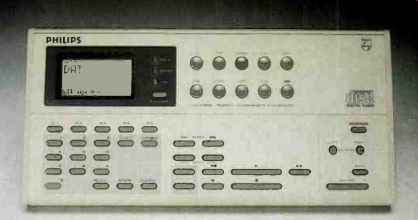




There's a definite, if still small, trend toward two-piece, no-holds-barred CD players. Philips' version, the limited-edition LHH1000, consists of a transport (housing the laser pickup assembly, the rest of the mechanics for the CD player, and the servo electronics) and a separate digital-to-analog converter. This player carries a suggested list price of $4,000, half what some other two-piece models cost but still twice as high as state-of-the-art single-unit CD players.
According to Philips, the LHH1000's D/A converter and digital filter use special "select grade" TDA-1541AS-1 chips with four-times oversampling, and they are supposed to realize more than 15.75 bits of resolution out of the 16 bits available in the standard CD format.
The transport section features a Philips CDM-1 mechanism made of die-cast aluminum alloy. A single-beam laser pickup floats on a radial/linear swinging arm that is supposed to result in improved tracking ability and faster track access. The unit also has Favorite Track Selection (FTS), an innovation introduced by Philips and Magnavox (another Philips trade name) in many CD players costing far less than this one. With FTS you can set the LH1000 so that, when a given disc is inserted, the unit will play only those tracks or selections you have previously programmed for that disc.
This is possible because each CD, according to the Philips/ Sony CD standards, caries an identifying code. The player memorizes this code along with the track numbers that you prefer to hear when the disc is played.
The transport and D/A sections of the LHH1000 can be linked via a coaxial cable or a supplied optical-fiber cable said to have diamond-published connectors.
The two components are a champagne color--rather a welcome departure from the all-black finish almost every audio manufacturer has adopted as a de facto "standard" for high-end equipment. The system comes with a sophisticated universal remote control that can learn 150 functions from other remotes of audio and video products.
Control Layout
Each of the LHH1000's components is fitted with a swing-down down door, along the lower edge of the front panel, which hides seldom-used controls. With the panel closed, the transport unit shows switches only for power, drawer open/ close, play/stop, and track advance/reverse. An elaborate display is also visible; it shows the usual track number, index number, and playing time as well as such modes as shuffle play and repeat, FTS data, and in tiny numerals from 1 to 24, the total number of tracks present on the disc.
When the hinged door of the transport unit is swung down, numeric buttons, selection and memory keys, and program cancellation and recall buttons are revealed. Here, too, are buttons for "FTS," the time display (elapsed time of track, total remaining time, and time of current track being played), repeat, and pause as well as rockers for fast-forward/reverse and "Index" forward/reverse.
The transport's rear panel has two coaxial digital output terminals and an optical output terminal. A fuse-holder is also accessible from the rear, and a separate power cord connects the transport to an a.c. source.
The front panel of the LHH1000's D/A unit has a power switch at the left and a central display divided into three areas. The first shows digital tape-monitoring mode (coaxial or optical), the second shows whether the current sampling frequency is 48 or 44.1 kHz (it's unlit when playing material made with 32-kHz sampling), and the third shows which of the two coaxial and two optical digital inputs has been selected. Opening the hinged door reveals a stereo headphone jack and level control, a "Digital Tape Monitor" selector, and an "Input Selector." An abbreviated block diagram of the D/A converter is also screened onto the surface behind the hinged door.
The converter's rear panel is equipped with two digital coaxial inputs, two optical digital inputs, left and right unbalanced analog outputs, and left and right balanced XLR analog output connectors. A fuse-holder and a second power cord complete the rear panel.
I was surprised to find that Philips had not provided even one convenience a.c. outlet, either on the transport or the D/A converter. As things stand, you will need two wall outlets to power this two-piece system. Furthermore, you will have to push the power switches on both components to power up the player. (Philips says this is in keeping with the design philosophy of maintaining separation all the way to the a.c. wall outlet.)
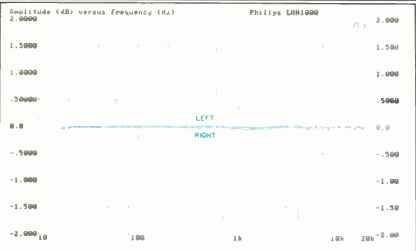
Fig. 1--Frequency response.
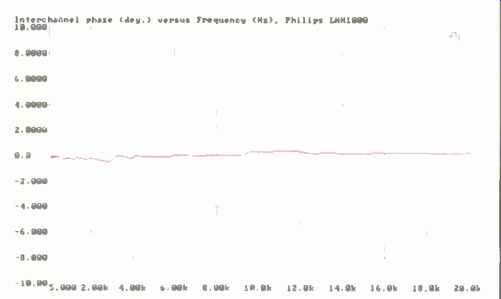
Fig. 2--Interchannel phase difference vs. frequency.
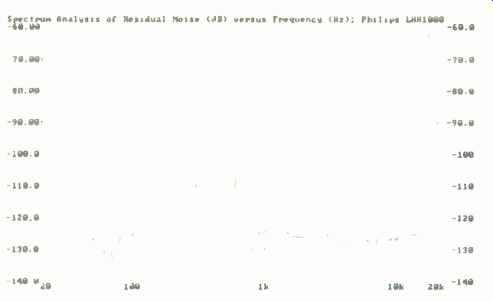
Fig. 3--Residual noise vs. frequency for "quiet" track of CD-1 test
disc for left channel (solid curve) and right channel (dashed curve).
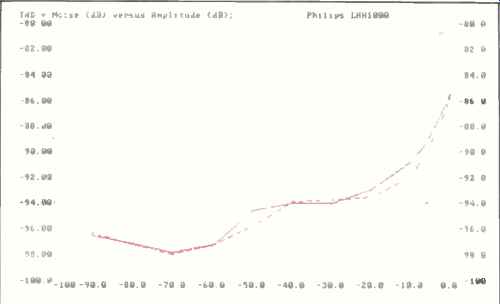
Fig. 4--THD + N vs. signal level for left channel (solid curve) and right
channel (dashed curve).

Fig. 5--THD + N vs. frequency for 0-dB recorded level (A) and for recorded
levels of-24 and-60 dB (B).
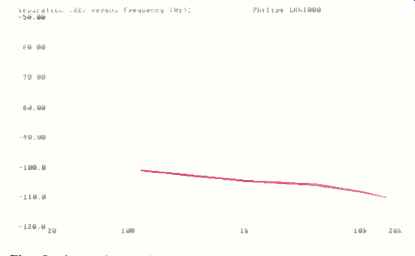
Fig. 6--Interchannel separation.
Measurements
Since Philips' published specifications suggest the unbalanced outputs will yield flatter response than the balanced outputs, I used this hookup for measuring performance of this system. No doubt, matching transformers in the analog section account for the slight deviation from perfectly flat response encountered via the balanced XLR output connectors. In any case, interfacing the ordinary unbalanced RCA-type output jacks with my Audio Precision test equipment, I plotted the response from just above 10 Hz to 20 kHz using my CD-1 test disc. The results are shown in Fig. 1. The slight ripple evident at the high-frequency end of the plot amounts to less than the claimed ±0.1 dB. I used a greatly expanded vertical scale (in degrees) to plot interchannel phase shift between channels. For all practical purposes, the shift was negligible (Fig. 2).
A-weighted S/N ratio, referred to maximum recorded level, was a very high 112.8 dB for the left channel and 113.3 dB for the right. These results are far better than the 101 dB claimed by Philips. A spectrum analysis of the residual noise generated by the analog section of the system is shown in Fig. 3, and it is clear from this plot that the power supply components are extremely well shielded from the audio signal circuitry. There is virtually no rise in noise level at the 60-Hz power-line frequency or its harmonics.
Next, I plotted THD + N (expressed in dB and referred to maximum recorded level) versus amplitude, from 0 to 90 dB, using a 1-kHz test signal that decreased in amplitude in discrete steps (Fig. 4). Some slight increase in THD + N was noted at higher output levels and was caused, no doubt, by a minute amount of nonlinearity in the analog output circuitry as higher audio levels were reached. The THD + N value of about-86 dB shown for both channels at 0-dB recorded level corresponds to roughly 0.005%. This is just about what I measured at 1 kHz when I plotted THD+ N versus frequency for a signal recorded at maximum level (Fig. 5A). In a spot check of SMPTE-IM distortion, using test signals at maximum recorded level, I obtained readings of 0.00315% for the left channel and 0.00265% for the right.
I have recently acquired a new test disc issued by Philips.
Much of its content is similar to what the CBS CD-1 test disc offers, but a couple of tracks yield new information that I thought might be worth including. Figure 5B, therefore, shows THD + N for recorded levels of -60 and-24 dB, using signals from the new Philips disc. As Figs. 5A and 5B demonstrate, distortion in a digital playback system rises as signal levels decrease. However, even at -60 dB, THD + N was only about 1.5%. Figure 6 is a plot of separation versus frequency over the range from 125 Hz to 16 kHz. At 1 kHz, separation measured 105 dB, while at 16 kHz, separation actually increased somewhat, to 110 dB. Notice, too, that at all frequencies, separation from left to right was virtually identical to separation from right to left. There are actually two curves in Fig. 6, both following the same path over most of the range tested.
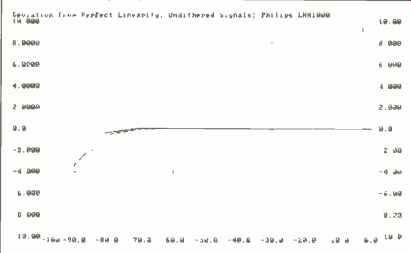
Fig. 7--Deviation from perfect linearity using undithered, 1-kHz signals for
left channel (solid curve) and right channel (dashed curve).
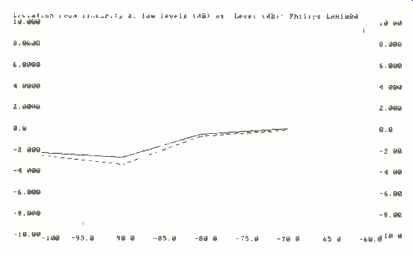
Fig. 8--Linearity deviation using dithered, 1-kHz signals for left channel
(solid curve) and right channel (dashed curve).
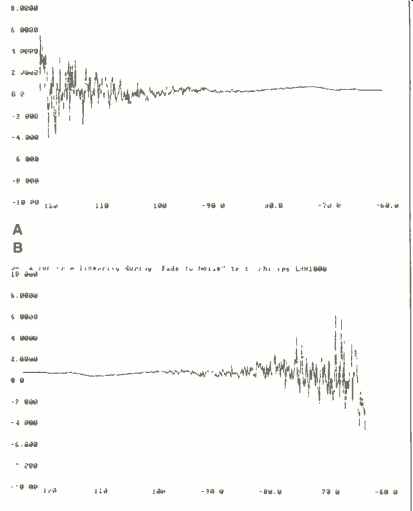
Fig. 9--Linearity deviation for "fade-to-noise" test of dynamic
range, using coaxial connections between transport and D/A unit (A) and using
optical connections (B).
I have come to the conclusion, as have others in the Held, that the most important difference between the "good," "better," and "best" CD players is their ability to reproduce low-level signals with good linearity. The three tracks of the CD-1 test disc I use for checking linearity are, therefore, the tracks that perhaps tell me the most about a CD player-no matter what its cost. Figure 7 shows the Philips LHH1000's deviation from linearity using undithered signals from 0 to -90 dB. Linearity was virtually perfect down to -80 dB; at -90 dB, deviation from perfect linearity measured between -3 and -4 dB. These results are above average for all players I have tested in the past year or two, though they are not the best I have ever obtained. Some CD players costing a good deal less have yielded equal or better results for linearity.
The same holds true for the test using low-level dithered signals covering the range from 60 to-100 dB, as seen in Fig. 8. Once again, deviation from perfect linearity was between -3 and -4 dB at -90 dB. Because of the dithered nature of the test signals, I was able to read down to-100 dB, where deviation from perfect linearity improved somewhat, to between -2 and -3 dB. Up to this point, I had not been able to measure any difference in performance when I used the optical or the coaxial interface between the system's two sections. I decided to give the comparison study one more try during the fade-to-noise test on the CD-1. Sure enough, a difference finally turned up. Figure 9A shows deviation from linearity using the coaxial interface; it also shows how noise increases at low levels (from about-110 to 120 dB).

Fig. 10-Monotanicity test. See text.
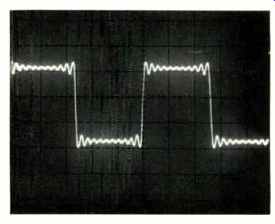
Fig. 11-Reproduction of 1-kHz square wave.
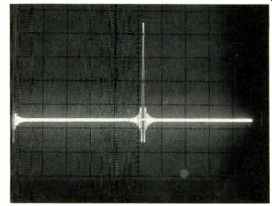
Fig. 12-Single-pulse test.
Observe carefully the amplitude of the noise spikes between -110 and -120 dB and compare them with those in Fig. 9B, where optical coupling was used. The noise spikes in Fig. 9B are actually greater in amplitude than those in Fig. 9A--so much for the noise-reducing advantages of optical coupling! Of course, both graphs depict noise floors which are extremely low and somewhat better than average for CD players. Using the better display (coaxial coupling) to calculate EIA dynamic range, I came up with a figure of around 111 dB. The EIAJ method of measuring dynamic range resulted in 98.8 dB for the left channel and 98.7 dB for the right. Judging from their specs, Philips must have used the EIAJ method rather than the newly approved EIA method.
Getting back to the question of optical versus hard-wired connections, I would quickly add that during the careful listening tests that followed the lab measurements, I was unable to detect any difference in sound quality between the two interface types. Could the departure from linearity in my particular sample have masked even more subtle sonic differences I might otherwise have heard when changing from optical to coaxial connections? I'll never know, one way or the other-at least not with this unit.
I got good confirmation of the minor low-level departure from linearity when I photographed the test signal used to check monotonicity. Careful examination of Fig. 10 shows that the second steps in the up and down "staircases" are not positioned with perfect symmetry above and below the display's central axis.
Figures 11 and 12 show how a 1-kHz square wave and a unit pulse were reproduced by the LHH1000. These results are pretty much what we have come to expect from players employing digital filtering and oversampling.
Use and Listening Tests
The versatility of this system's remote control is truly awesome. Just about every function of the CD player was controlled using the remote, both during the bench tests and subsequent listening tests.
I used my two new "defects discs" to check out the tracking capabilities of the transport. In general, mistracking occurred whenever the data gaps reached 1 mm in length.
(The largest data gap any CD player has been able to track since I started using these test discs has been 1.5 mm; poorly tracking units misbehave at or below 0.7 mm.) The minor linearity deviation at ultra-low levels could not be heard by me or the several guests in my lab who had an opportunity to compare this player with one that is somewhat more linear at low levels. I listened to everything from large orchestral works to chamber music with light, extremely soft passages.
Clearly, Philips has attempted to design and build a reference CD player and has spared no expense in doing so. Aesthetically, the two units are attractive and, mounted one above the other, give the impression of elegance and style that I'm sure was intended. I doubt Philips expects to sell this two-piece CD player in any great quantity. Rather, borrowing from the technology inherent in the LHH1000, perhaps Philips will come up with somewhat more economical models incorporating much of the new technology in this, their reference CD player.
--Leonard Feldman
(Source: Audio magazine, Jan. 1990 )
Also see:
Philips LHH 500 CD Player (Apr. 1992)
Philips CD880 Compact Disc Player (Jan. 1989)
= = = =